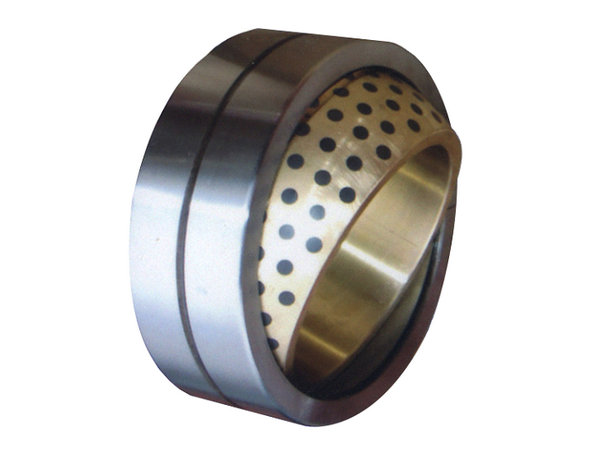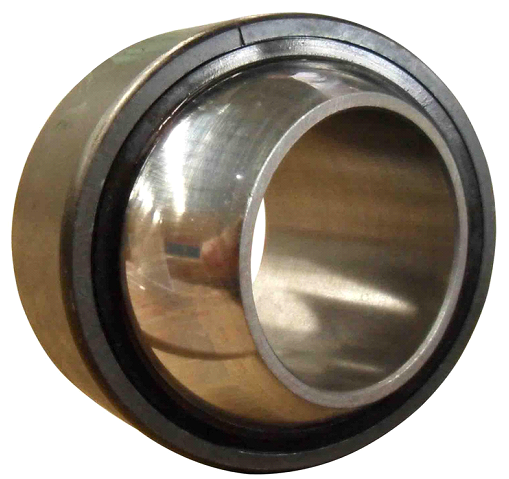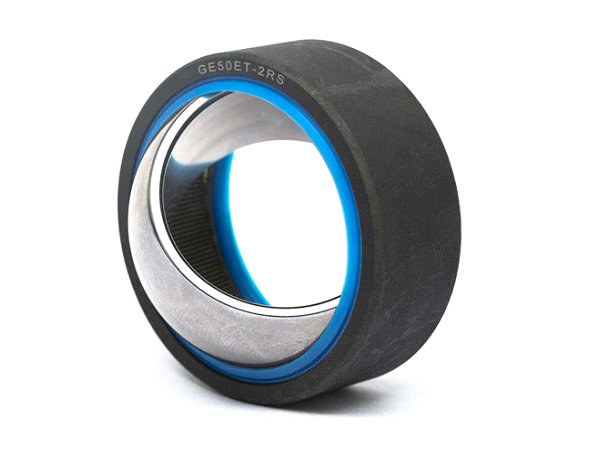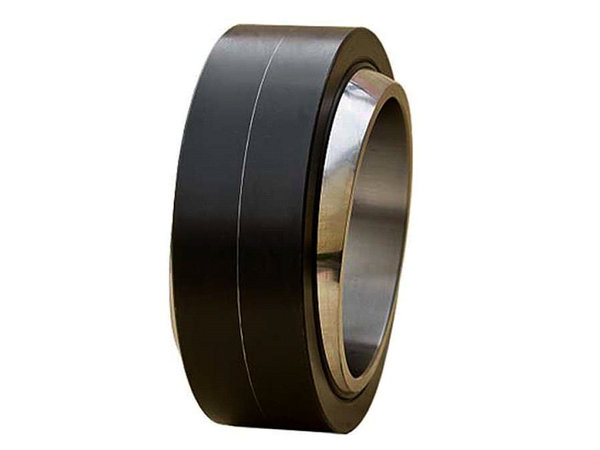The material properties of the sleeve and the role of the sleeve
2018-03-07
Bush parts are one of the typical parts often encountered in machines. It is mainly used to support the transmission components, transmission torque and bear the load. Sleeve parts are parts of the rotating body, the long copper base self-lubricating plate greater than the diameter, generally by the concentric cylindrical outer cylindrical surface, conical surface, the hole and the thread and the corresponding end surface of the composition. According to the structure of self-lubricating composite bushings of different shapes, sleeve parts can be divided into optical axis, stepped shaft, hollow shaft and crankshaft. The aspect ratio of the shaft is less than 5 is called the short axis, more than 20 is called the slender shaft, most of the axis is between the two. Shaft bearing support, with the bearing shaft section called the journal. Journals are the assembly axis of the shaft, their precision Flange bushing and the surface quality generally require higher, the technical requirements generally based on the main shaft function and working conditions.
The main requirements are as follows:
a. Dimensional accuracy than the average parts of the dimensional accuracy requirements. Sleeve parts bearing the highest precision bearings, IT5 ~ IT7; with the journal size accuracy requirements can be lower for the IT6 ~ IT9.
b. high shape accuracy.
c. high position accuracy, the general axis of the radial runout of 0.01 to 0.03, high-precision axis of 0.001 to 0.005.
d. The surface roughness is higher than that of common parts. The surface roughness Ra of bearing journals and important surfaces is usually 0.1-0.8um. The surface roughness Ra of mating journals and minor surfaces is 0.8-3.2um.
Bush parts commonly used materials are 45 steel, 40Cr alloy steel, bearing steel GCr15 and spring steel 65Mn, as well as 20CrMoTi, 20Mn2B, 20Cr and so on. The most commonly used blanks for bushing parts are bar stock and forgings, with only large or complex shafts, where castings are used where quality permits. As the rough after forging, the metal can make the internal fiber tissue evenly distributed along the surface, get higher tensile, bending and torsional strength. Therefore, in addition to the optical axis, the diameter of the ladder can be used less than the hot-rolled material or cold-drawn bar materials, generally more important axis forgings. Another bushing parts of the blank also need to undergo heat treatment.
Shaft structure design principles:
a. save material, reduce weight as much as possible the use of contour strength, or cross-sectional shape of a large cross-sectional shape.
b. easy to locate the precise positioning of the shaft, a solid assembly disassembly and adjustment.
c. Use a variety of structural measures to reduce stress and improve strength.
d. easy to manufacture and ensure accuracy.
The formulation of the procedure rules in the shaft sleeve parts is directly related to the quality of the workpieces, labor productivity and economic benefits. A part can have several different processing methods, but only one is more reasonable, in the formulation of mechanical processing procedures.
Be aware of the following points:
a. Parts Process Analysis, you need to understand the structural features of parts, precision, material, heat treatment and other technical requirements, and to study product assembly drawings, assembly drawings and acceptance criteria.
b. Carburizing parts processing routes are generally: blanking → forging → normalizing → roughing → semi-finishing → carburizing → carbon removal → quenching → car thread, drilling or milling → roughing → low temperature aging → Semi-fine grinding → low temperature aging → fine grinding.
c. Rough choice of benchmarks: non-machined surface, should be selected non-machined surface as a rough benchmark. For all surfaces to be machined casting axis, according to the smallest surface allowance to find the correct. And choose a smooth surface, so open the gate. Select a solid and reliable surface for the rough base, while the coarse base can not be reused.
d. fine reference selection: to comply with the principle of coincidence reference, as far as possible, select the design basis or assembly reference as a positioning benchmark. In line with the principle of a unified basis. As much as possible in most processes using the same positioning benchmark. As far as possible, make the positioning datum coincide with the measurement datum. Choice of high precision, stable and reliable surface for the fine reference.
In industrial and mining enterprises there are large and small production equipment shaft, the general machine for the rotary motion of the parts installed on the shaft, so the shaft in the industrial production process plays a decisive role in the normal operation of the sleeve is related to business equipment Good or bad running.
A shaft sleeve wear reasons
There are many reasons for shaft sleeve wear, but the most important reason is that the metal used to make the shaft is determined by the metal. Although the hardness of the metal is high, the concession is poor (it can not be restored after deformation), the impact resistance is poor, and the fatigue resistance is poor , So easy to cause sticking wear, abrasive wear, fatigue wear, fretting wear, most of the sleeve wear is not easy to detect, only the emergence of high temperature, beating rate, abnormal sound, etc., will cause people's perception, but By the time people found it, most of the shafts were worn, causing the machine to shut down.
Second, the domestic technology for wear
Domestic wear and tear for the sleeve is generally used in repair welding, Xiang sleeve, playing pitting, etc., if the downtime is short and spare parts, the general will replace the new shaft, some high technology repair companies will use brush plating, laser Welding, micro-arc welding or even cold welding, these maintenance techniques require the purchase of expensive equipment and high-paying hires skilled workers, some domestic SMEs generally through higher technical assistance to help repair the high value of the axis, but to pay the high maintenance costs And shipping costs.
Third, Europe and the United States for shaft wear repair technology
For the above repair technology, Japanese and Korean companies in Europe and the United States have been less common, because the traditional technology is poor, and laser welding, micro-arc welding and other advanced repair equipment and personnel demanding, cost support, and now generally used in Europe, America, Japan and South Korea Is a polymer composite technology and nanotechnology. Now Fushishi blue composite polymer technology repair sleeve wear to elaborate
(A) polymer composite technology and nano-technology repair principle
Due to the metal material as a "constant relationship", although the higher the intensity, but the impact of poor and concessions, so long-term operation will result in increasing with the gap caused by shaft wear and tear, aware of this key reason, the new technology in Europe and America Research institutes developed polymer composites that have the required strength and hardness of the metal, but also with the metal does not have the concession (variable relationship), through the "mold repair", "parts correspondence", "machining" and other processes , To maximize the size of the repair parts and mating parts; the same time, the composite material itself has the advantages of compression, bending, elongation and other comprehensive advantages, can effectively absorb the impact of external forces, to greatly resolve and offset the bearing pairs The radial impact of the shaft and to avoid the possibility of the emergence of the gap will also avoid the equipment due to increased clearance caused by the relative movement of wear and tear, so the static fit of the shaft and bearing, composite material is not to rely on "hardness" to solve Equipment wear, but by changing the relationship between the power to meet the operational requirements of the equipment.
(B) polymer composite sleeve wear repair technology
1. Online quick fix
For low-speed, large shaft diameter large bush wear, the general use of direct repair technology, that is, by cleaning the surface of the week, reconcile the material, the application of materials, scraping the surface, waiting for curing five steps to complete, do not need to disassemble Machine, just wear the exposed shaft can be exposed, does not require any equipment, usually 2-6 hours to repair completed. Avoid the demolition, transportation, remote repair and installation process, saving workers labor and repair time, reduce downtime for businesses and avoid the cost of replacing the new shaft and transport. General composite benefits are several times or even hundreds of times more than traditional methods.
2 machining repair
For high speed, shaft diameter smaller bush wear, the general use of machining repair, that is repaired by the above steps, and then the lathe will be repaired after the excess material car off, improve concentricity, to avoid the shaft at high speed In the beating.
Hunan Jintai Hardware and Machinery Co.,Ltd. is a professional manufacturer on various kind of bearings over 15 years China factory.
We are making all kinds of slide bearings including DU PTFE composit bushing, DX POM composite bushing,bimetal bushing,wrapped bronze bushing, cast sliding bushings and wear plate bearing pad, sintered bronze bushing and sintering parts, ball transfer bearings, etc.
The shapes of bearings can be in sleeve, flanged, spherical, plate, washer, pad, ring, square etc.
Base materials in carbon steel, harden steel, iron, stainless steel, bronze, brass, copper, bronze-steel alloy.Lubricant materials in PTFE, teflon, POM, nylon, plastic, oil, graphite, grease, MoS2, etc.
Export to America,Canada,Brazil,Peru,Argentina,Chile,Paraguay,Europe,Finland,France,Germany,Italy,Spain,Sweden,
Britain,Estonia,Ukraine,Turkey,Austrial,Russia,Korea,Malaysia,Singapore,Thailand,Egypt,Kenya,Somali,
Congo,Zimbabwe,South Africa,etc.












 (Chat Online)
(Chat Online)








